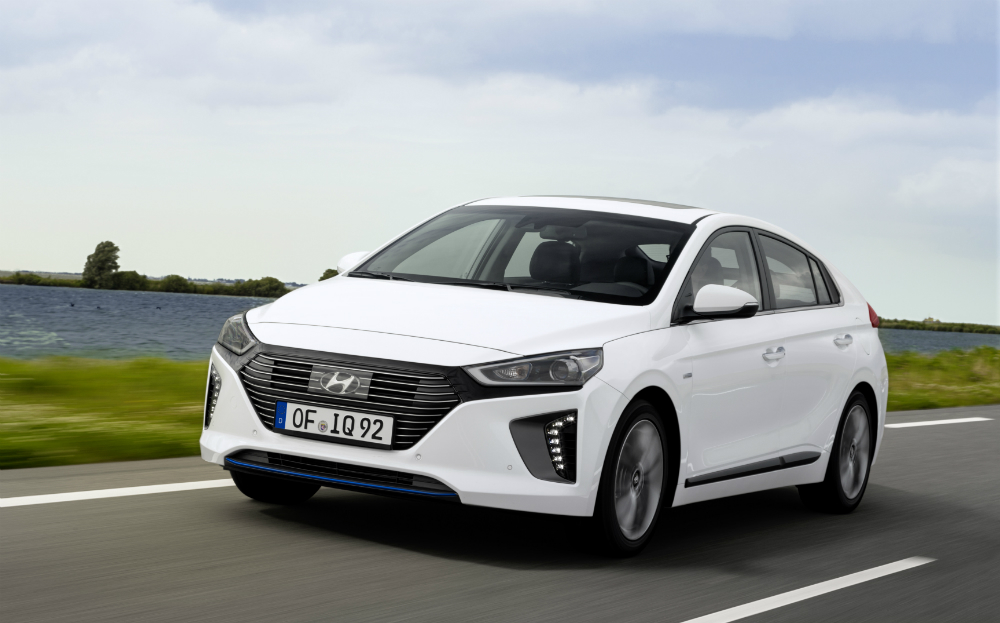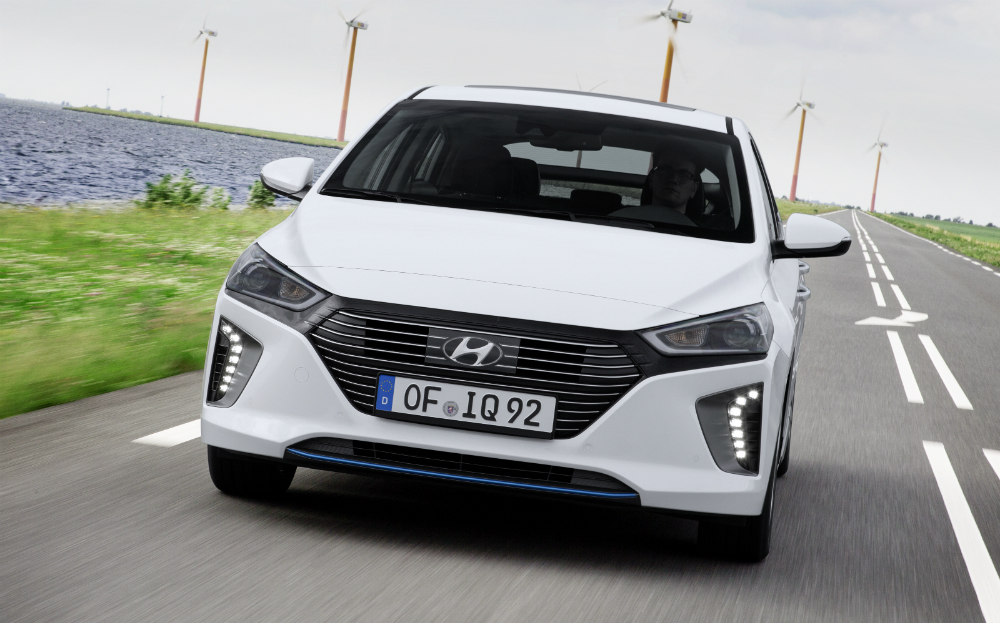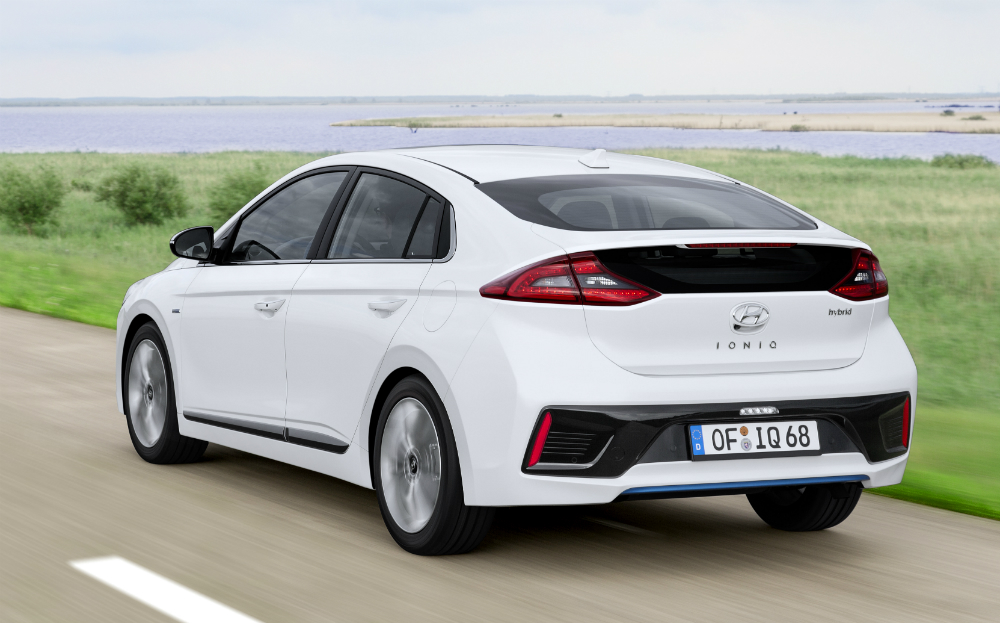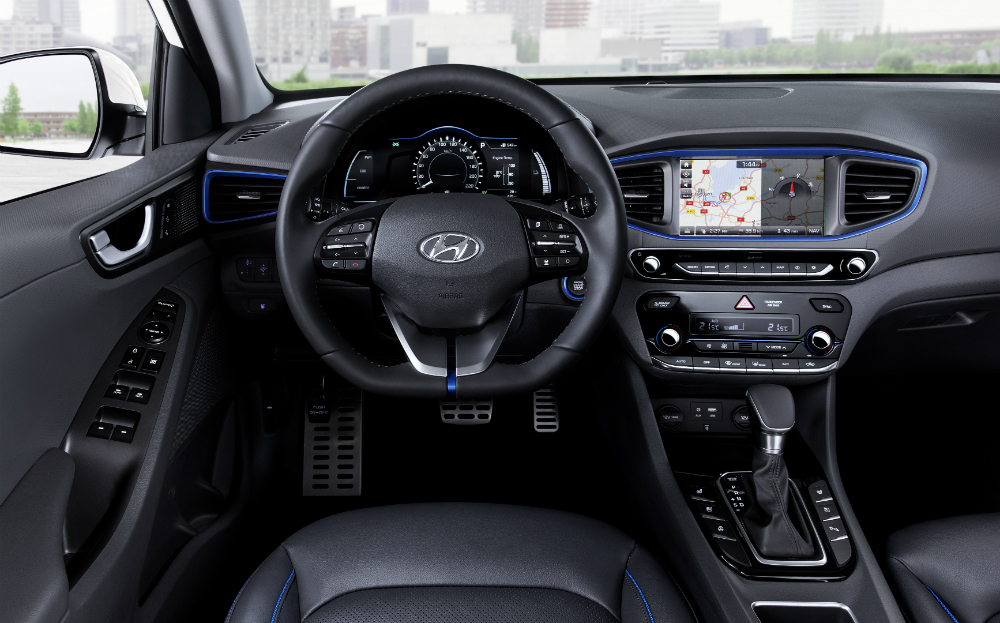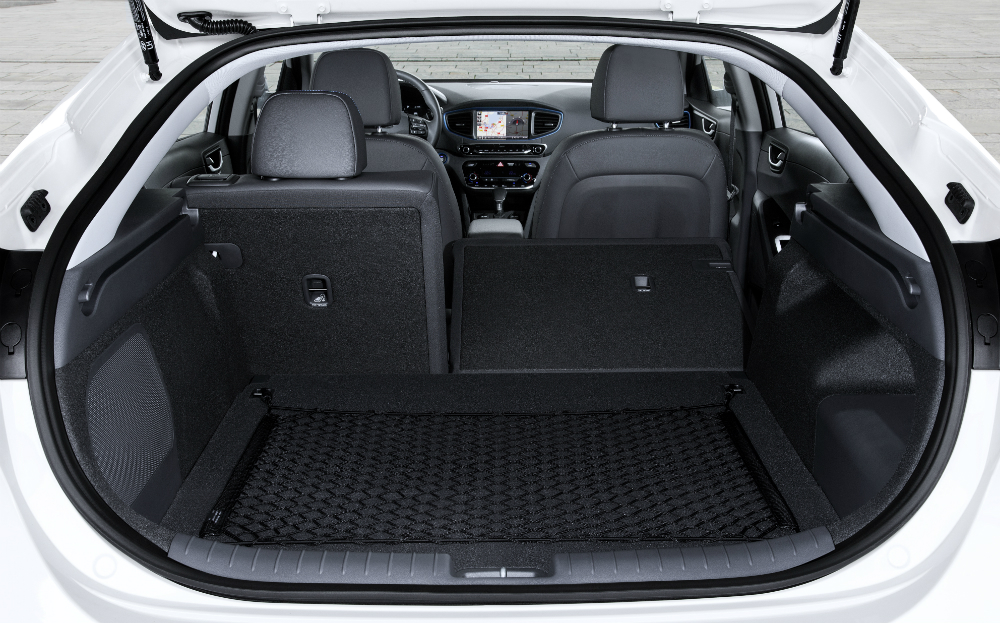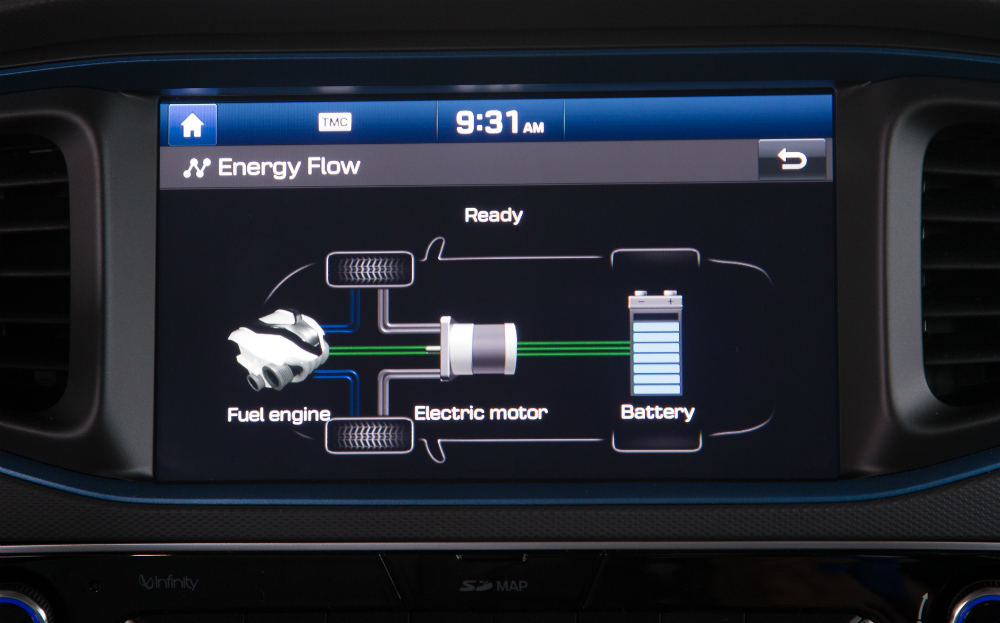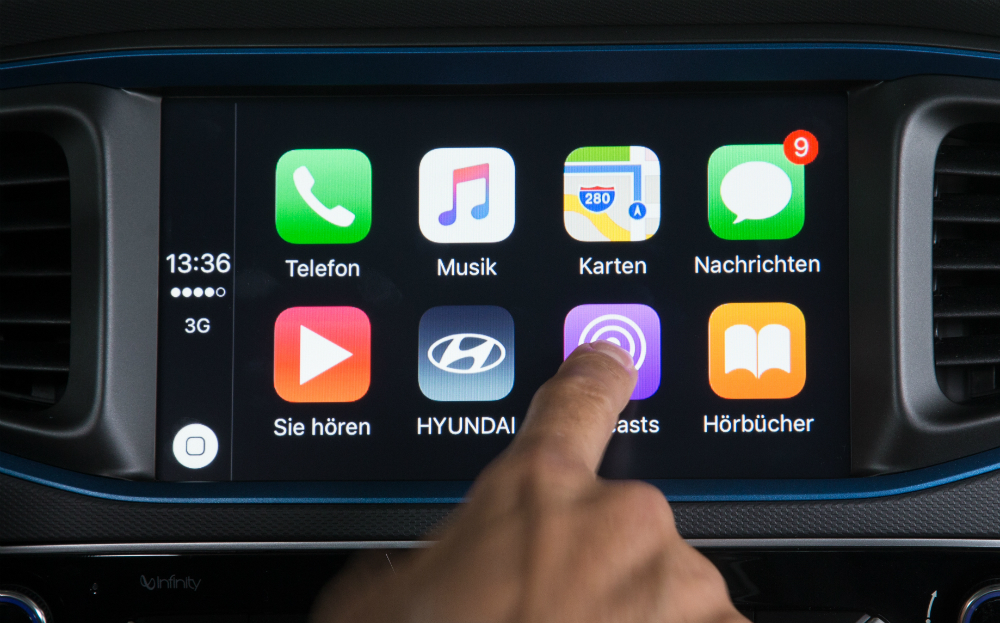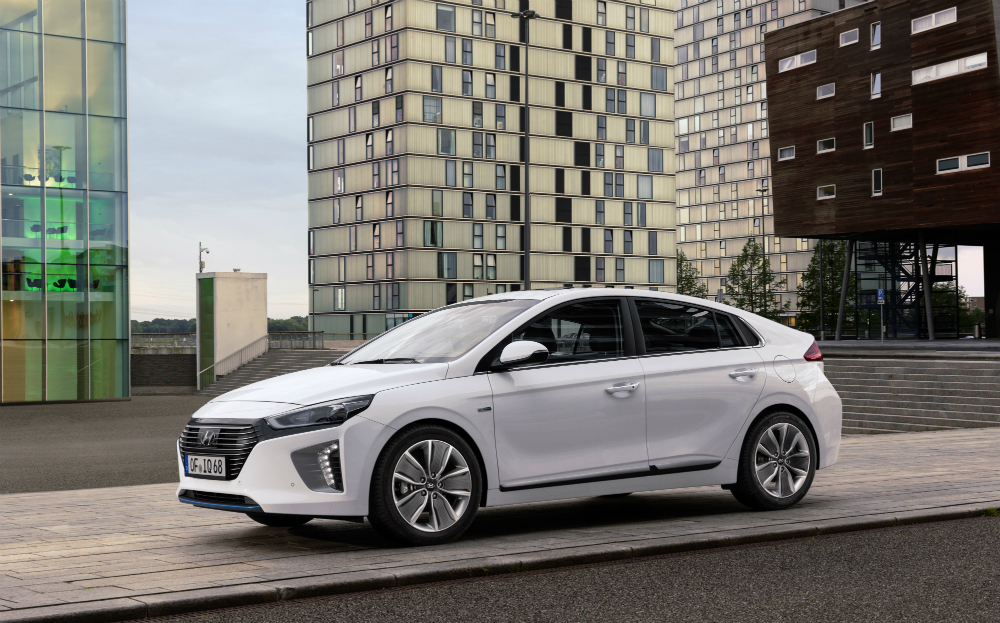First Drive review: Hyundai Ioniq hybrid
It's like a Prius, only normal
IF YOU can hear a faint whining and whistling in the background, don’t start Googling tinnitus and resist the urge to waggle your fingers in your ears. It’s the sound of an oncoming swarm of clean, green cars powered by a mixture of fossil fuel and electricity – and there’s barely a diesel pump in sight.
Car makers are rushing “eco” models into showrooms faster than a baker filling the shelves with freshly made bread at dawn, as hybrids, plug-in hybrids and electric cars come of age.
The trend began in earnest in 1997, when the Toyota Prius became the wheels of choice for Californians who were on a mission to save the planet but couldn’t quite bring themselves to travel to the shops of Rodeo Drive by bicycle. Since then, more than 5m Prius have been sold around the world.
Although plummeting petrol prices have put the brakes on sales of some eco-cars, Hyundai’s engineers have been watching the Prius with interest. In fact, they have probably bought one, driven it to breaking point, stripped it down to its bare bones and then set about working out how they can improve it. After all, Hyundai predicts that by 2020 more than 6m new eco-cars will be bought each year.
The result is the Ioniq, the first car that comes as a hybrid, a plug-in hybrid or a pure electric car. The name sounds — intentionally, one suspects — rather like one of those clean-living morning remedies to be mixed with a glass of water. Will British drivers swallow it, though?
The Ioniq is built on a new, bespoke platform, which will go on to form the basis of 28 hybrid and electric cars. Or so Hyundai says. At the Ioniq’s launch, the company predicted it would become the biggest-selling Asian car maker in Europe within four years.
The Ioniq is part of this grand plan to elbow Toyota out of pole position. With the reputation of diesel engines put under the spotlight by Volkswagen’s Dieselgate emissions scandal, petrol engines with a battery-powered electric motor, or pure electric cars, are here to save the day. Or so we’re told.
It’s likely that the plug-in hybrid version will be the most popular in Britain, but that wasn’t available to drive at the car’s launch. With demand for the electric version expected to be small, we deftly steered around that and dropped into the driver’s seat of the hybrid.
If the price is anything to go by, the Ioniq is bursting out of the saloon bar with all guns blazing. It costs £19,995, whereas the cheapest Prius is £23,295, and a VW Golf 1.6 BlueMotion five-door is £22,360.
And Hyundai isn’t waging this price war by skimping on standard equipment. The tally of toys includes alloy wheels, a digital audio system with Bluetooth, cruise control, rear parking sensors and camera, autonomous emergency braking and a system that helps to stop distracted or dozing drivers drifting into the wrong lane.
However, with CO2 emissions of 79g/km, it misses out on the London congestion charge exemption figure of 75g/km, which seems a pity. But it is exempt from road tax and sits in the 15% benefit-in-kind tax bracket for company car drivers.
Much like a Toyota Prius, it has a 1.6-litre four-cylinder direct-injection petrol engine with 104bhp, tuned for maximum fuel economy. The unseen and unheard hand that helps this along is a 32kW (43bhp) electric motor powered by a lithium-ion battery. The two are brought together in sweet harmony by a six-speed dual-clutch gearbox.
That last technical feature is said to be why the Ioniq doesn’t manage to dip below 75g/km of CO2, as the machinery is heavier than Toyota’s continuously variable transmission. However, its use may be music to the ears of anyone who has ever driven a Prius and heard it crying out like a child stubbing its toe when asked to accelerate with any vigour.
Drivers who find the styling of the latest Prius too challenging for their tastes shouldn’t have any problems with the Ioniq. It’s smart and sober, deliberately steering a wide course around controversy.
Inside, it’s much the same story. The five-seat family car is spacious, with a 443-litre boot (which would be deeper still if it weren’t for the inclusion of a hidden storage tray) and … what’s this? A boot that you open and close yourself? Hallelujah. It’s so much quicker than an electrically operated system, and there’s one gadget fewer to go wrong.
After a couple of hours behind the wheel, our aggressive driving score was 0% and cyclists could rest easy
The driver’s environment feels familiar and comforting. It’s clearly laid out and the design and quality of all the fittings is acceptable, with a few flourishes of electric blue to hint at the electricity at work beneath the surface. There’s still a way to go if Hyundai wants to generate the feelgood factor that comes from sliding behind the wheel of, say, a Golf.
All sorts of information is available to drivers who wish to put their hyper-miling technique to the test. One display on the trip computer gives a score for economical, normal and aggressive driving. Pleasingly, after a couple of hours behind the wheel, our aggressive driving score was 0%, presumably meaning the cyclists of Holland (where the car was launched) have nothing to fear from Hyundai Ioniq drivers.
In basic trim, with 15in alloy wheels, the Ioniq can return up to 83mpg. That’s a way behind the 94mpg of the Prius, but on a par with the Golf 1.6 TDI BlueMotion.
The electric motor pulls the car away smartly from traffic lights and is said to be able to power the car to 75mph. More often than not, the petrol engine pitches in earlier than that with just the faintest thrum. The two can work independently or together, and both the engine and the brakes can recharge the Ioniq’s battery. The two power sources gel nicely with the six-speed gearbox. It does without paddles on the steering wheel but has a Sport mode that injects a bit of get-up-and-go into proceedings. It’s unlikely to get much use, given the sedate driving style you tend to adopt in a car like this.
It’s hushed around town, but at motorway speeds there was a bit too much wind noise. Generally, though, the turn of speed, comfort and ease of use make this a relaxing car. Not an exciting one, though.
Next year the plug-in hybrid version will go on sale. And that is likely to be the big one. It does not bring the range anxiety of the all-electric model, which costs £28,995, and offers lower tax bills and fuel bills than the standard hybrid. It will also cost somewhere between the two, says Tony Whitehorn, head of Hyundai UK: about £25,000.
For drivers who want to ditch diesel and plug in to something different, the Ioniq PHEV (plug-in hybrid electric vehicle) appears to be the one worth waiting for. As it is, the Ioniq hybrid shows that Hyundai is quietly getting on with the job of overtaking the mass-market competition. And the only whining you hear will be coming from Toyota when it sees how little the Ioniq costs.
“The display accused me of ‘excessive speed’. Which was a bit strong, as I was doing 24mph in a 30mph area” Giles Smith reviews the latest Toyota Prius


